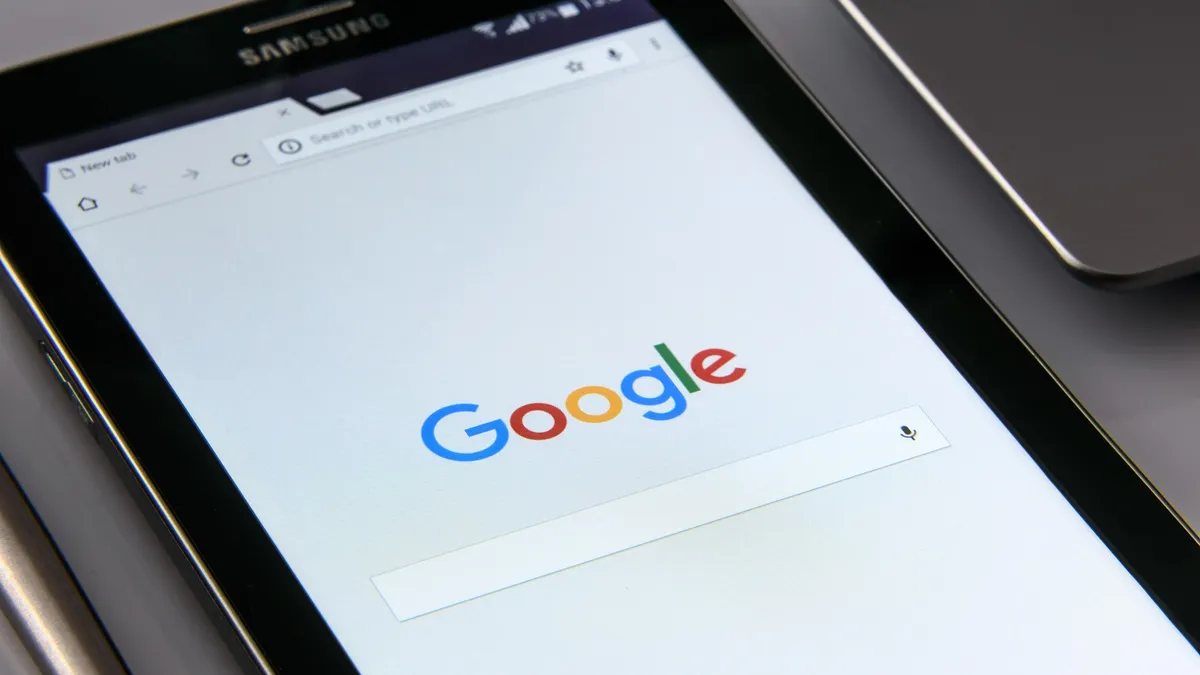Dive Brief:
- Google's advertising revenue surged in the first quarter, indicating a strong recovery in the digital ad market as brands expect consumer demand to grow in a reopened economy. Parent company Alphabet said revenue jumped 34% from a year earlier to $55.31 billion as Google's ad sales rose 32% to $44.68 billion.
- YouTube's ad revenue jumped 49% to $6 billion, a growth rate that exceeded the 46% gain seen in the prior quarter. YouTube Shorts, the video-sharing site's answer to social video app TikTok, saw growth in daily views of 86% to 6.5 billion as of March from 3.5 billion at the end of 2020, Sundar Pichai, CEO of Alphabet, said in a conference call with analysts.
- Google's rising ad revenue shows that the search giant continues to recover from a slump in the second quarter of last year, when it reported the first ad sales decline in its 26-year history amid a broader pullback in ad spending during the pandemic. The Q2 decline gives Google a lower hurdle to jump over this year.
Dive Insight:
Google's strong gains in ad revenue show that marketers are gaining confidence in the ongoing recovery from the pandemic, and seek to reach consumers as they spend more time with its services to shop online, order food for delivery or watch videos on YouTube.
"In the first quarter in search, we saw sustained strength across most categories, led by retail," Philipp Schindler, senior vice president and CBO of Alphabet, said in the call with analysts. "We also saw strong performance in tech and CPG. In YouTube, we had phenomenal growth driven by direct response, followed by continued strength in brand."
The company is seeing renewed consumer interest in the travel category as people use Google to help plan their next trips, he said. To support that growth, Google last month let hotels and travel companies list their booking links for free, echoing a similar move for shopping last year. As retailers faced declines in foot traffic to brick-and-mortar stores, Google made product listings free, eliminated commission fees and opened its shopping platform to e-commerce software provider Shopify and payments company PayPal.
"Over the last six months people's shopping preferences have shifted constantly in response to changing conditions. It's not just online. It's not just offline. It's a mix," Schindler said, pointing to the ongoing trend toward searches for "available near me" and curbside pickup. "That trend has not changed. Searches for local and businesses are up 80% versus last year. Omnichannel is here to stay."
Dick's Sporting Goods saw its e-commerce sales double last year as it highlighted curbside pickup, pickup-in-store and ship-from-store fulfillment options in Google Search, and started a campaign on YouTube to build awareness for its new store concepts, Schindler said. He also pointed to crafts retailer Michael's as a retailer that saw 350% growth in e-commerce, and showcased its omnichannel fulfillment on Google Search and Maps.
YouTube again was a significant driver of ad revenue as more people watched the video-sharing site on connected TV (CTV) and over-the-top devices. While most YouTube viewing time happens on mobile devices, the video-sharing site's share of CTV and over-the-top (OTT) viewing time grew to 34% in Q3 2020 from 27% in Q4 2019, per data from digital talent network Collab cited by eMarketer. That growing presence on the biggest screen in U.S. households positions YouTube for additional revenue growth as marketers seek to incrementally reach target audiences with more personalized ads.
Looking ahead, Google faces the possibility of more shifts in consumer behavior as pandemic lockdowns are lifted, and many people resume former activities like going to the office or school. The return to pre-pandemic behaviors may mean people spend less time with digital media.
"In the first quarter, we continued to benefit from elevated consumer online activity and broad-based strength in advertiser spend," Ruth Porat, CFO of Alphabet, said on the call. "It is too early to say how durable this consumer behavior will be as economies recover and restrictions on mobility are lifted."










